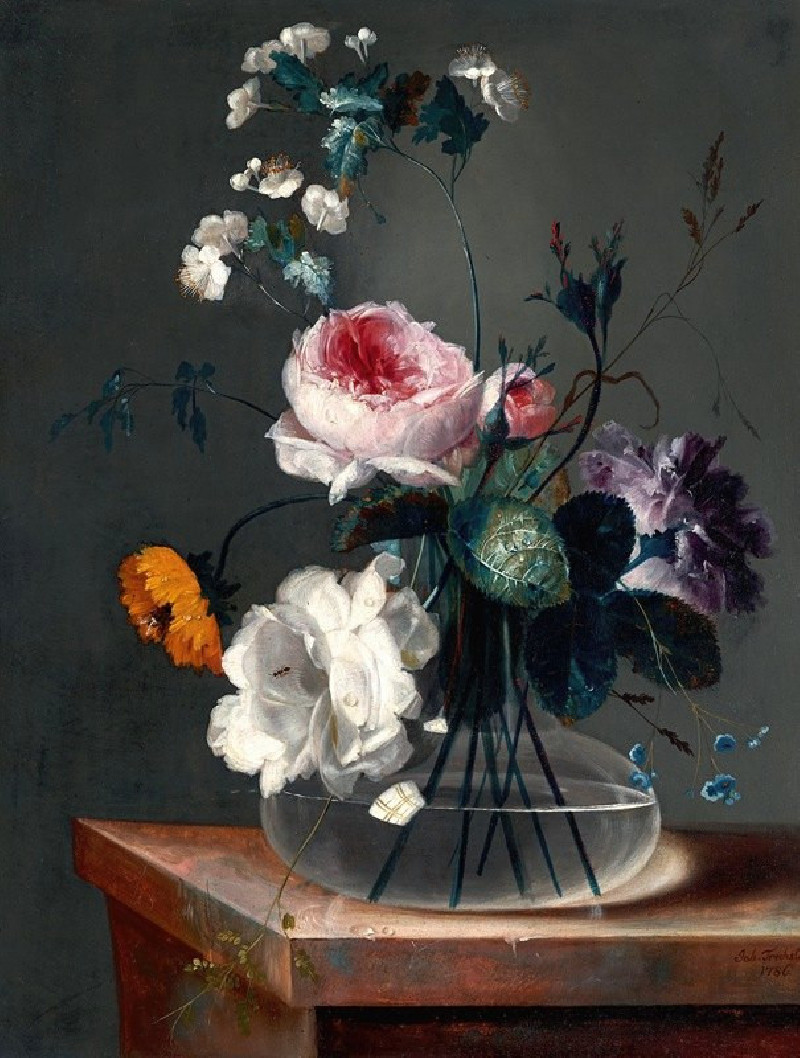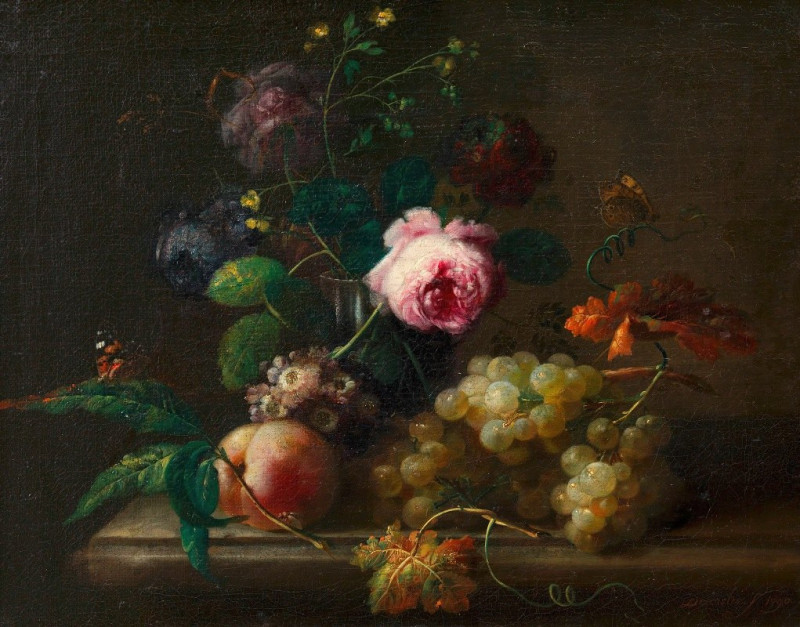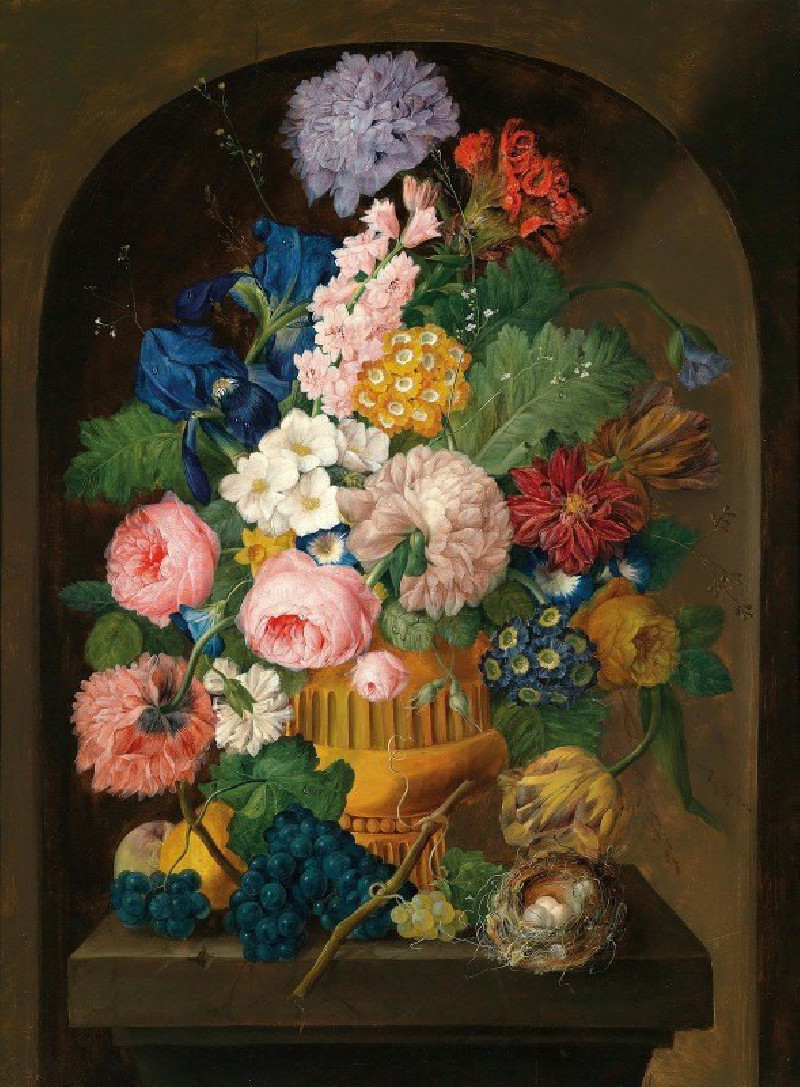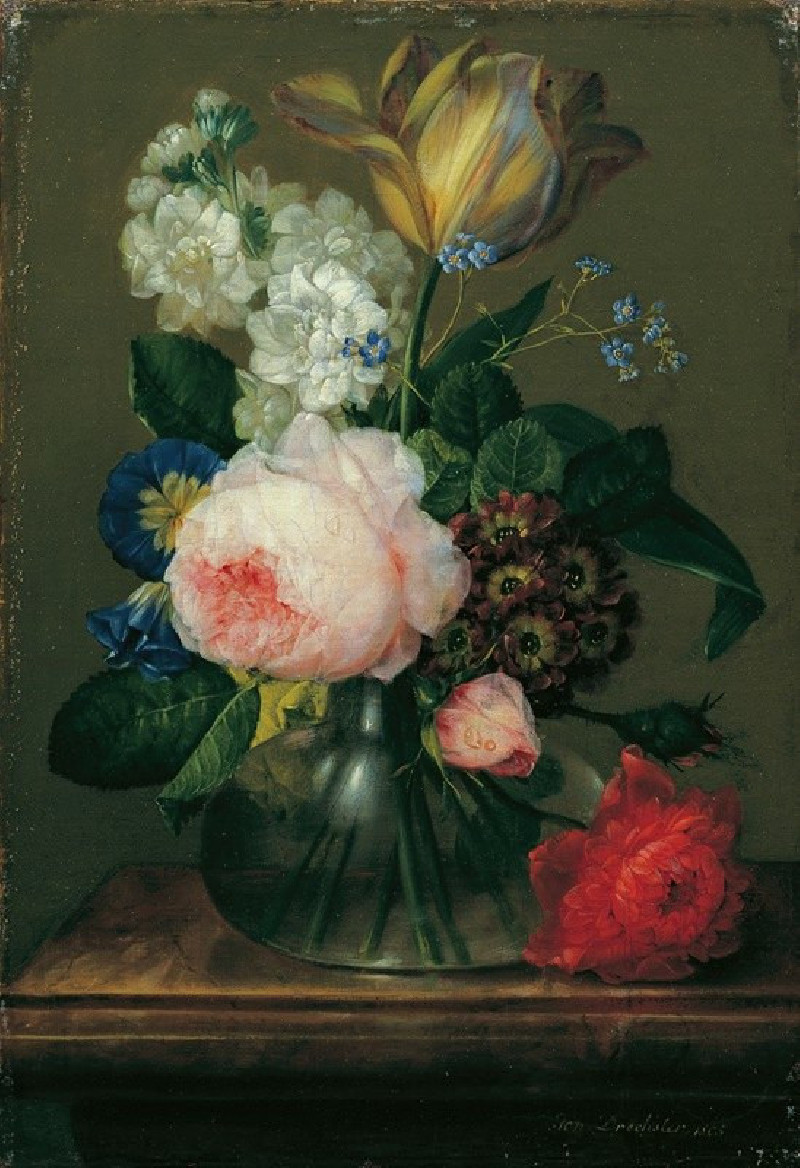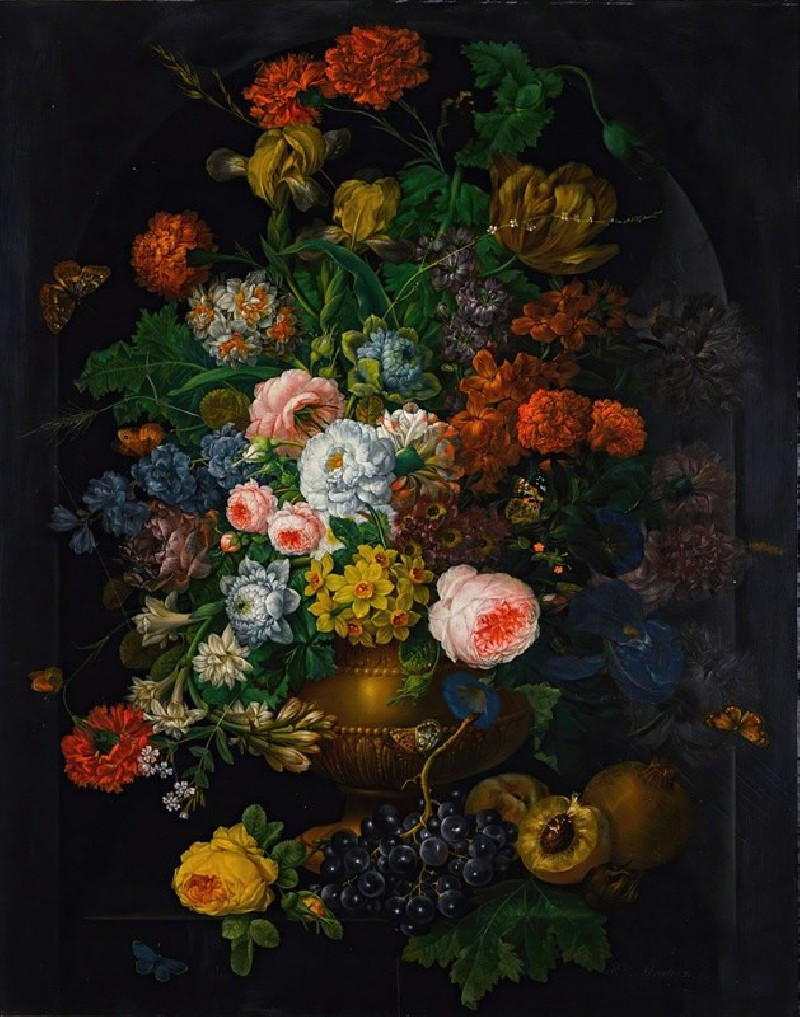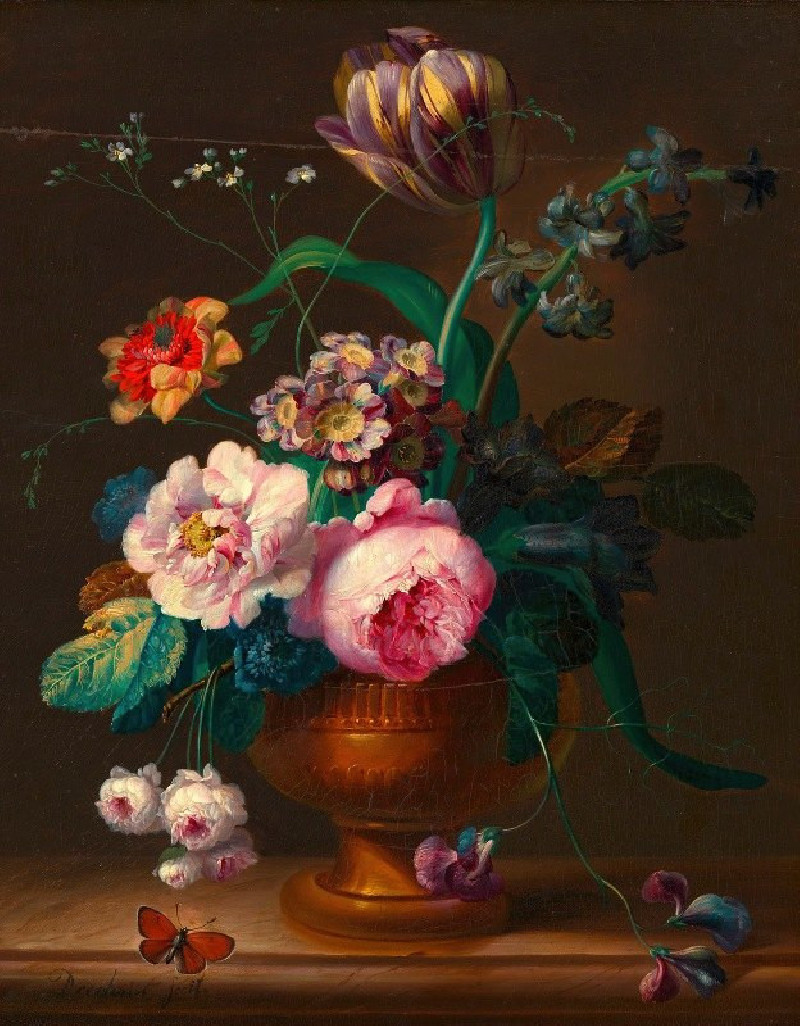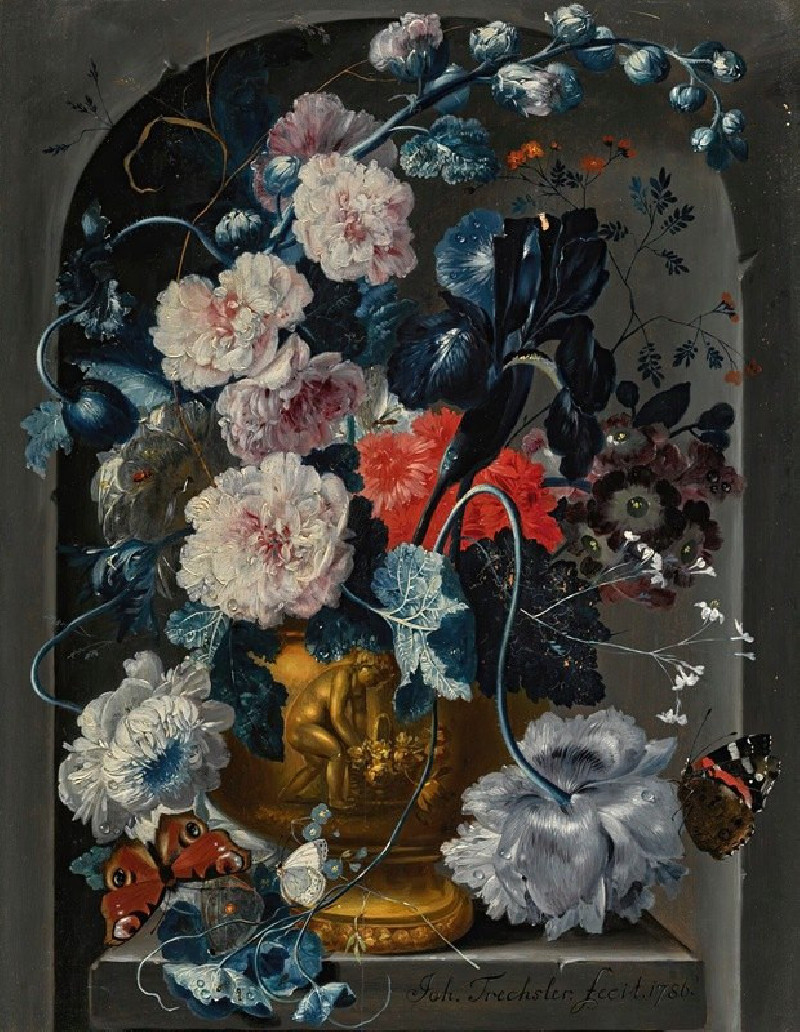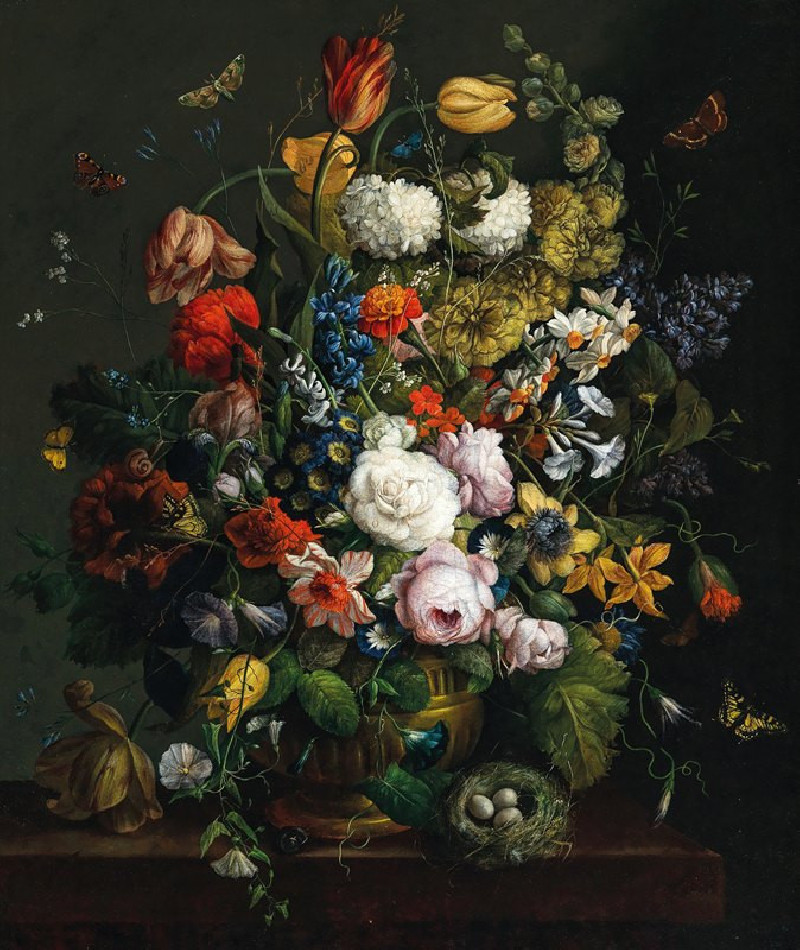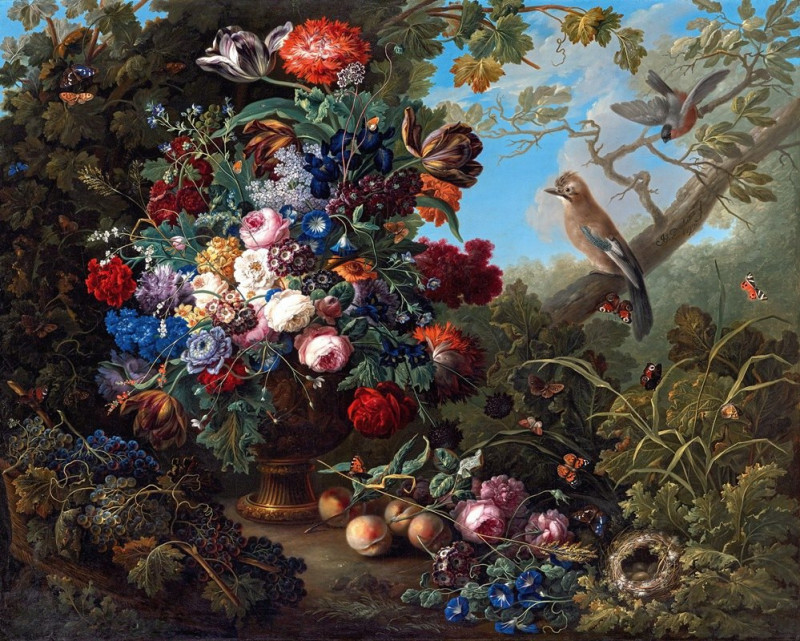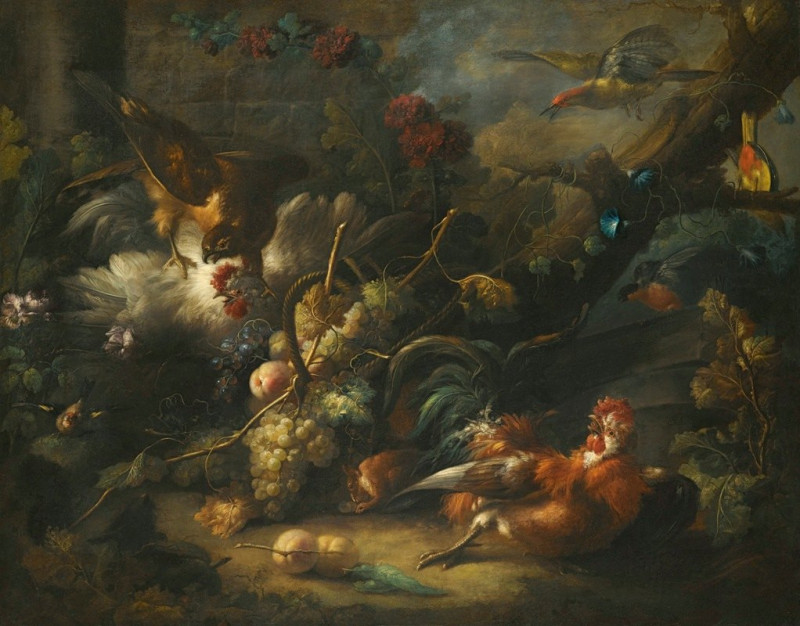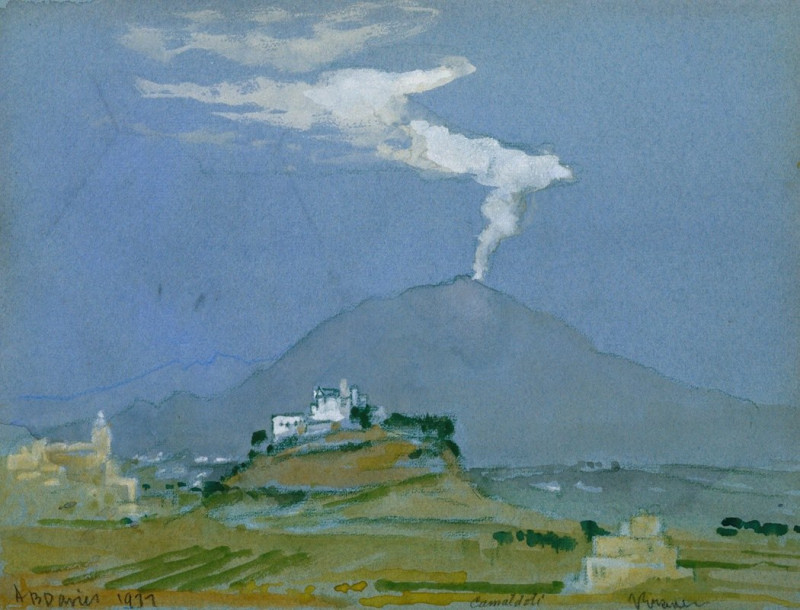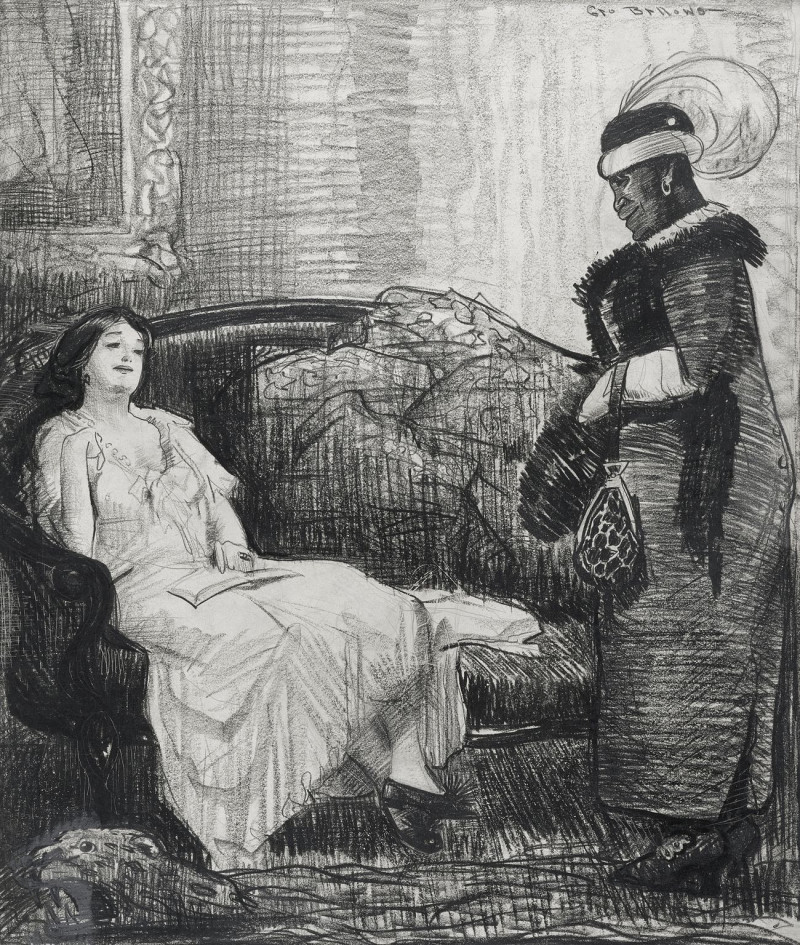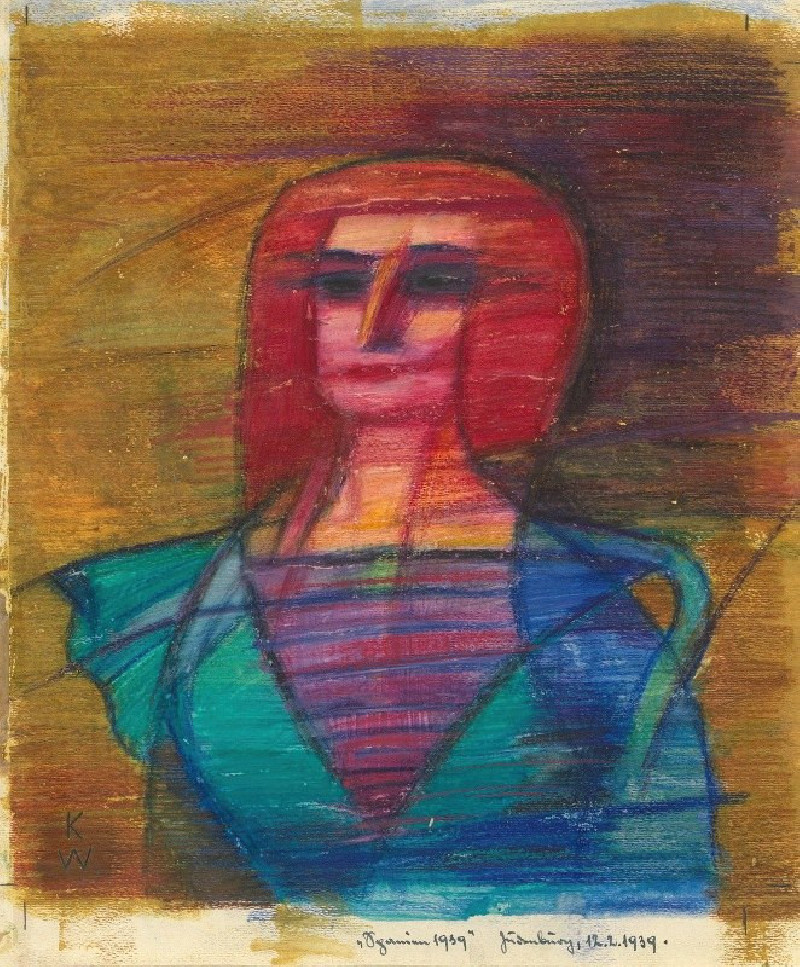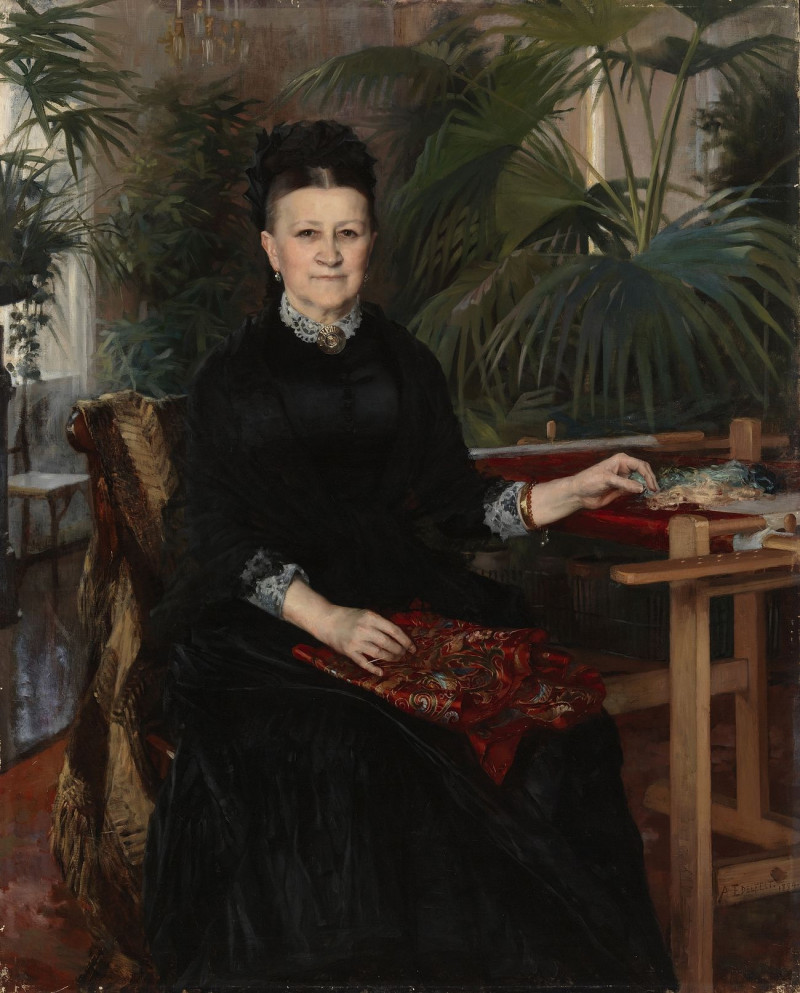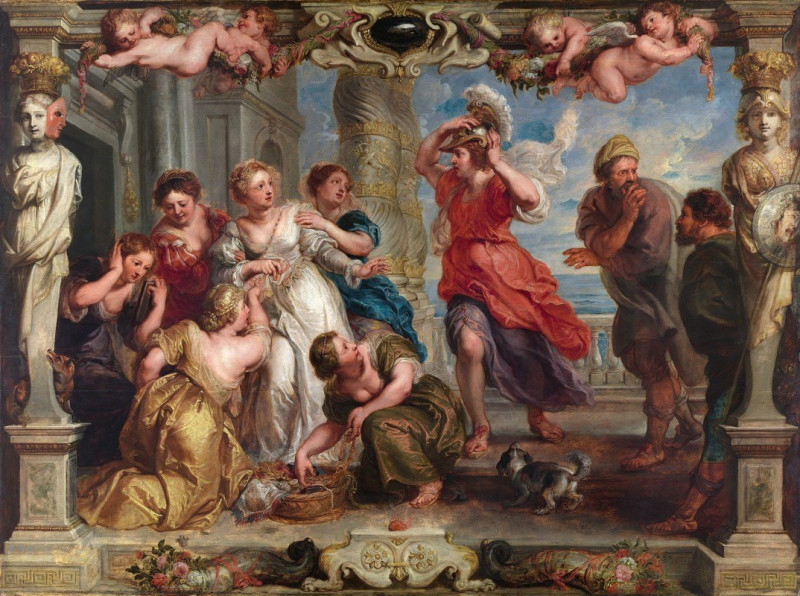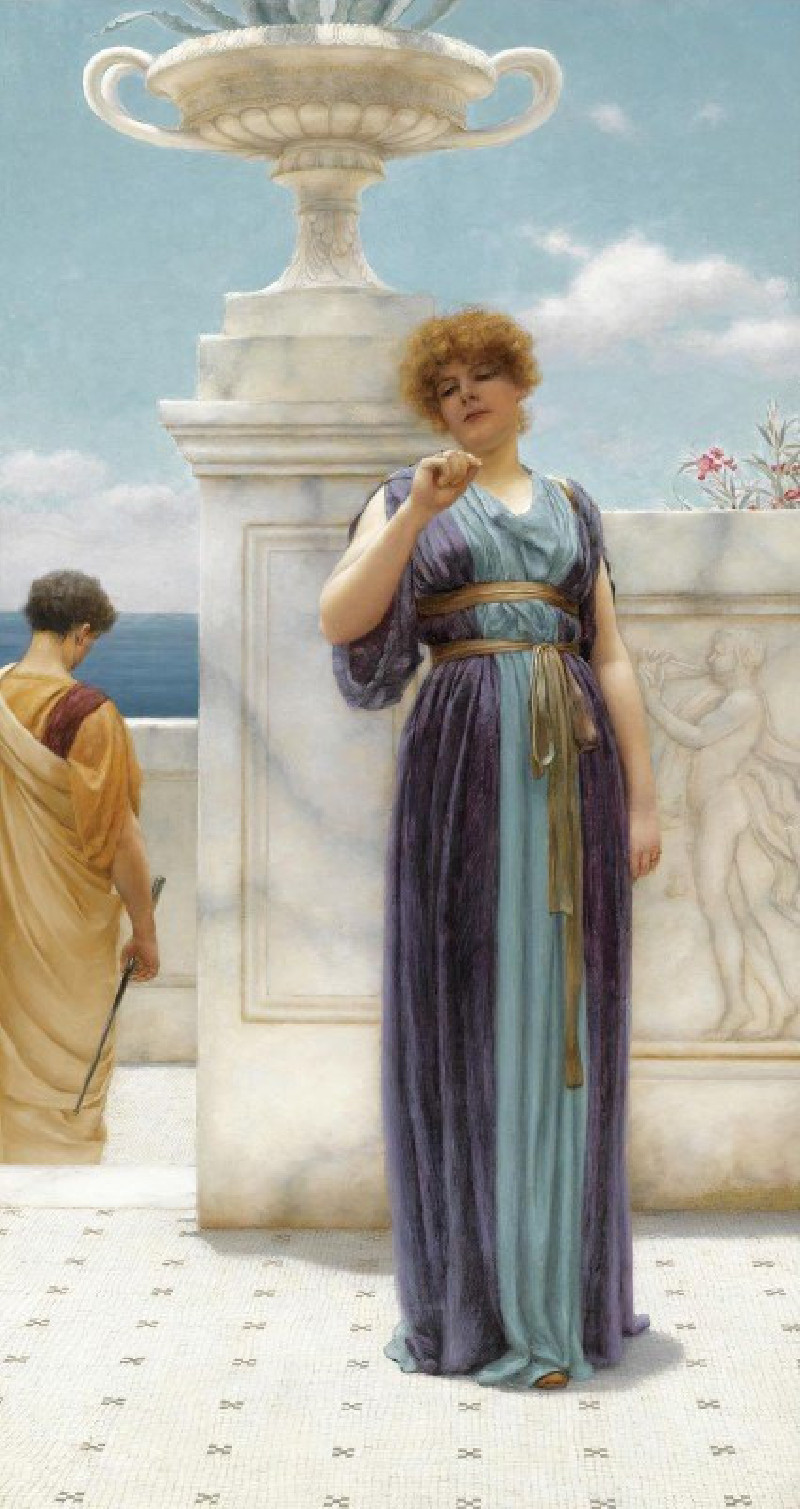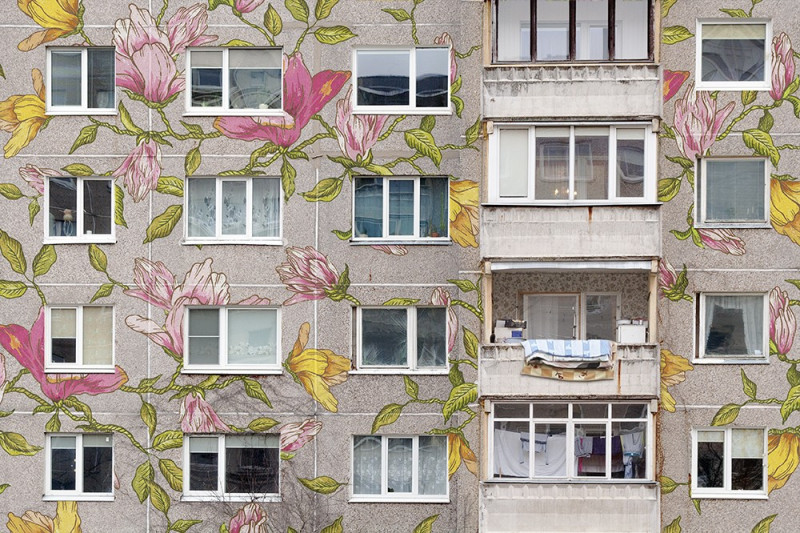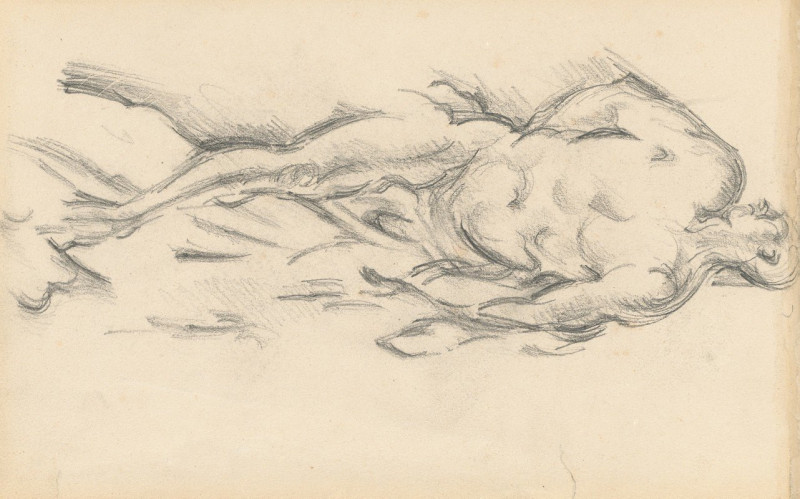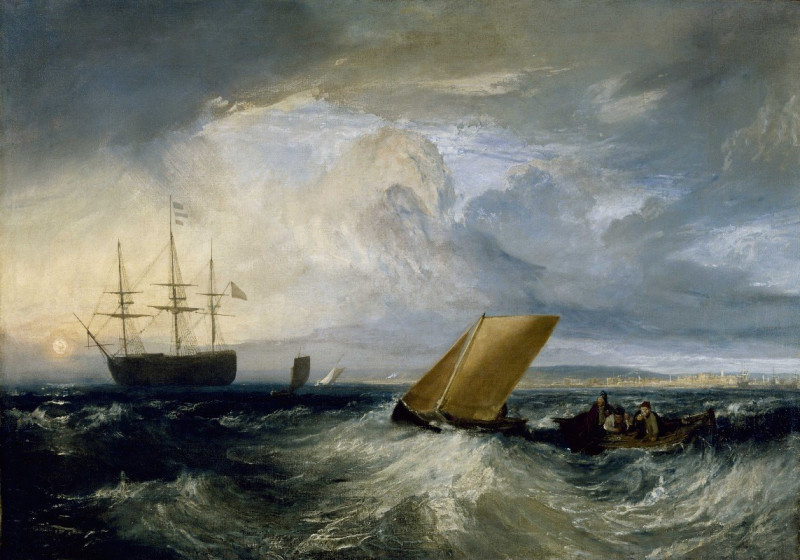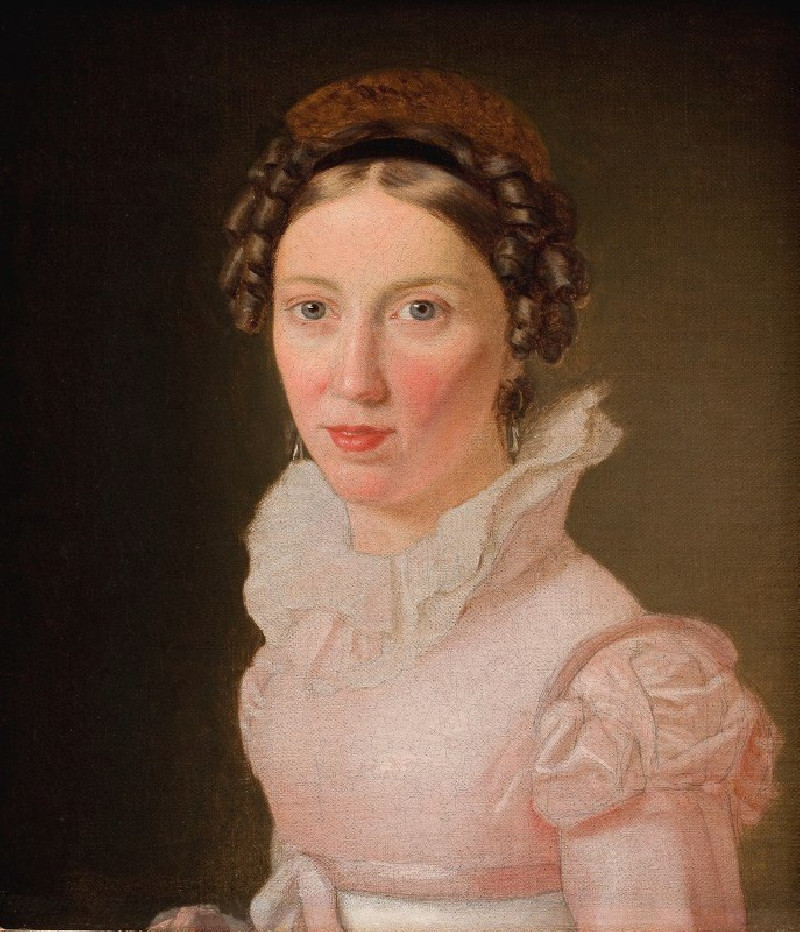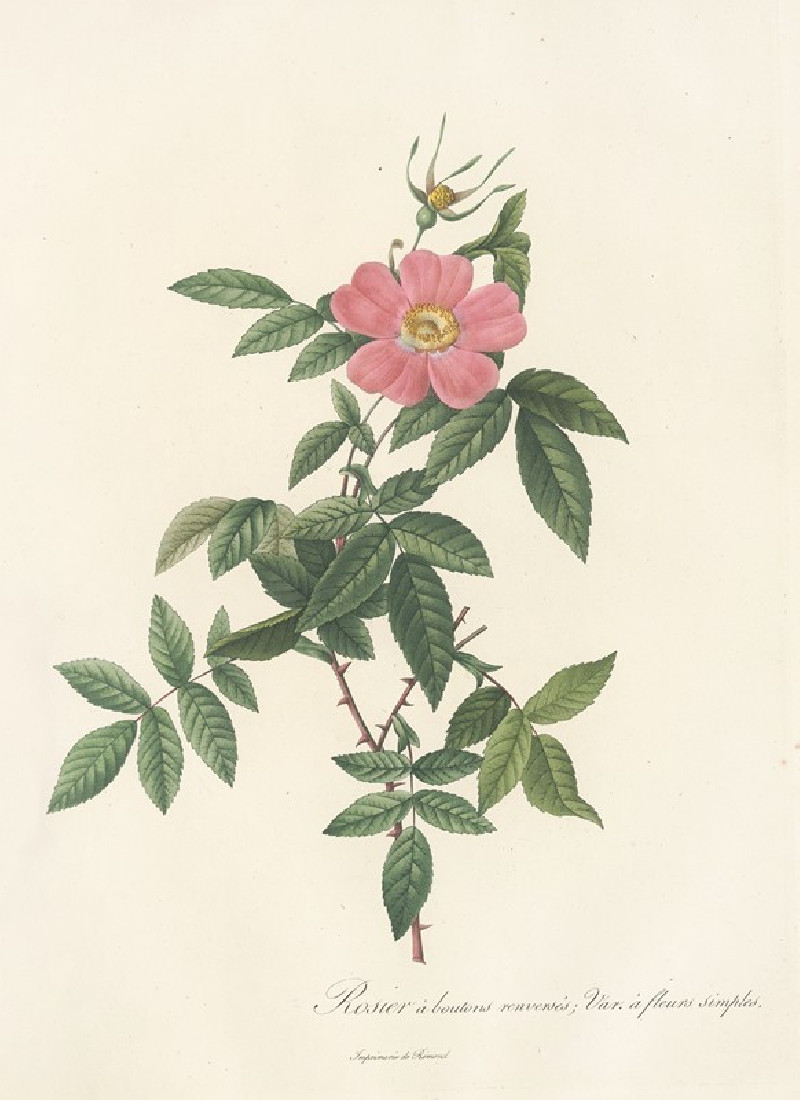Blumenstillleben (1786)
Technique: Giclée quality print
Recommended by our customers
More about this artwork
This exquisite painting by Johann Baptist Drechsler, titled "Blumenstillleben" (1786), is a masterful depiction of a still life with flowers. At first glance, the arrangement pulls the viewer in with its elegant complexity and vibrant color palette. Drechsler's skill in rendering the delicate textures and nuanced shades of the flowers is immediately evident, creating a lively and tangible feeling throughout the composition.The painting features a rich assortment of flowers, each meticulously detailed, from the blush of the large central rose to the crisp white petals of the surrounding blooms. The arrangement includes a variety of species, each contributing its own unique color and form, creating a harmonious yet dynamic assembly. The flowers are set against a subdued, dark background, which serves to amplify their vivid colors and dramatic interplay of light and shadow.A closer look reveals Drechsler’s precise attention to the subtleties of light, with gentle illuminations highlighting the velvety textures of petals and the intricate details of leaves and stems. The artist's use of contrast not only enhances the three-dimensional effect but also adds a dramatic flair to the scene."Blumenstillleben" is not just a visual delight; it is also an exploration of the natural beauty and transient perfection of flowers. Drechsler’s work invites the viewer to pause and reflect on the elegance of nature, captured forever in this timeless piece.
Delivery
Returns
Johann Baptist Drechsler was an Austrian painter of flowers.
Drechsler was born in Vienna in 1766, the son of a porcelain painter. In 1787 he became the first professor of flower-painting at the Academy of Fine Arts in Vienna, where his students included Josef Nigg and Franz Xaver Petter. His style was particularly influenced by the finely detailed work of the Dutch flower-painter Jan van Huysum. He is recorded as working at the Vienna Porcelain Manufactory between 1772 and 1782.

